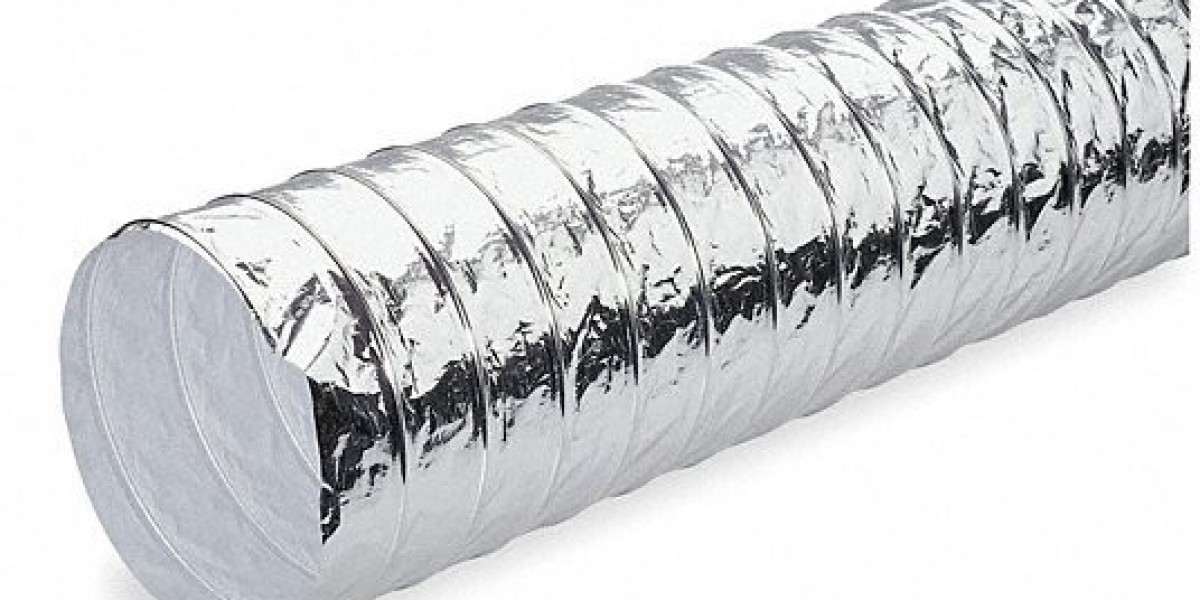Flexible ductwork is a versatile and commonly used component in HVAC (Heating, Ventilation, and Air Conditioning) systems, providing numerous advantages but also presenting some challenges. Here, we will explore the benefits and potential drawbacks of using flexible ductwork and provide guidelines for its proper installation and maintenance.
Benefits of Flexible Ductwork:
1. Ease of Installation:
Flexible ducts are lightweight and pliable, making them easier to handle and install compared to rigid ductwork. They can be routed around obstacles and through tight spaces, which is particularly advantageous in retrofitting projects or when working in confined areas. This flexibility can reduce installation time and labor costs.
2. Cost-Effectiveness:
The material costs for flexible ductwork are generally lower than those for rigid metal ducts. Additionally, the reduced installation time translates to lower labor costs, making flexible ducts a cost-effective option for many HVAC installations.
3. Noise Reduction:
Flexible ducts can help reduce noise levels within the HVAC system. The insulation and the flexibility of the ducts can dampen vibrations and minimize the transmission of noise from the system’s components to the living or working spaces.
4. Thermal Insulation:
Many flexible ducts come with built-in insulation, which can help maintain the temperature of the air being transported. This can improve the overall energy efficiency of the HVAC system by reducing heat loss or gain as air travels through the ductwork.
Potential Drawbacks of Flexible Ductwork:
1. Airflow Restrictions:
Flexible ducts can suffer from increased air resistance due to their ribbed inner surfaces. If not properly installed, they can sag, bend, or have sharp turns that create significant airflow restrictions, leading to decreased system efficiency and higher energy consumption.
2. Durability Concerns:
While flexible ducts are easier to install, they are also more prone to physical damage compared to rigid ducts. They can be punctured, torn, or crushed more easily, which can lead to air leaks and reduced system performance. Their lifespan may also be shorter in high-traffic areas or in applications where the ductwork is exposed to physical stress.
3. Potential for Mold and Mildew:
If flexible ducts are not properly sealed and insulated, they can become breeding grounds for mold and mildew due to condensation. Moisture can accumulate in the ducts, especially in humid environments, leading to poor indoor air quality and potential health issues.
Place Your Online Orders: https://www.ductingsuppliesuk.com/shop-online
Ensuring Proper Installation and Maintenance:
1. Correct Sizing and Length:
Ensure that the flexible ducts are properly sized for the HVAC system’s airflow requirements. Avoid using excessively long runs of flexible ductwork, as this can lead to significant pressure drops and reduced airflow. Use the shortest and straightest route possible to minimize resistance.
2. Secure Connections:
All connections should be securely fastened and sealed to prevent air leaks. Use appropriate clamps, tape, or sealants to ensure airtight connections between the flexible duct and other components, such as rigid ducts, registers, and plenums.
3. Support and Routing:
Flexible ducts should be properly supported to prevent sagging and kinking. Use hangers or straps to support the ducts at regular intervals, ensuring they maintain their shape and do not collapse. Avoid sharp bends and excessive twists, which can restrict airflow and increase pressure losses.
4. Insulation:
If the flexible ducts do not come with built-in insulation, ensure that they are adequately insulated, especially when running through unconditioned spaces like attics or crawl spaces. Proper insulation helps maintain the temperature of the air being transported and prevents condensation issues.
5. Regular Inspection and Maintenance:
Schedule regular inspections to check for signs of damage, air leaks, or mold growth. Clean the ducts periodically to remove dust, debris, and other contaminants that can accumulate over time. Address any issues promptly to maintain optimal system performance and indoor air quality.
Conclusion:
In conclusion, flexible ductwork offers several benefits, including ease of installation, cost-effectiveness, noise reduction, and thermal insulation. However, it also presents potential drawbacks such as airflow restrictions, durability concerns, and the risk of mold and mildew. To maximize the advantages and minimize the disadvantages, it is essential to ensure proper installation and maintenance. By following best practices for sizing, securing, supporting, insulating, and regularly inspecting flexible ductwork, HVAC professionals can achieve efficient, reliable, and healthy air distribution in various applications.










